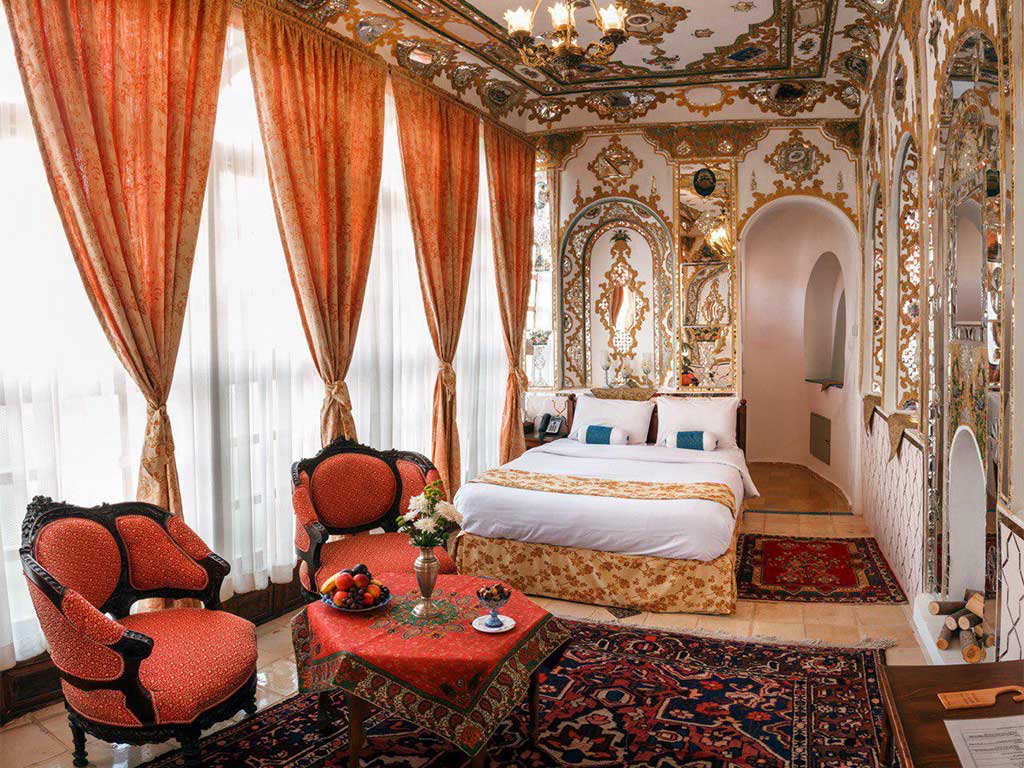Isfahan traditional hotel
The historical house of Ghasremonshi is located in Ghasremonshi neighborhood (Hassan abad gate). In the pre-Islamic period, this neighborhood was within the city limits and the gate of the southeast of the city, and in the Islamic era, the city of Isfahan was created following the connection of this group of villages. This building is registered in the list of national monuments and in 1394 it was completely renovated. This building belongs to the late Safavid and Qajar periods
Ghasremonshi Hotel is a hotel with traditional design and structure and has been built and renovated by Chal Bagh method. The main mansion belongs to the Safavid period and includes a royal residence and several rooms, including a mirror and Safavid room. They are often fluent in English and most of their hotel guests are foreigners.
The hotel restaurant is in a beautiful environment with traditional architecture and colorful windows, as well as serving a variety of Persian food, soup and traditional Isfahan food such as Amaj soup is ready to receive hotel guests. The hotel café is also located in the open air and in the beautiful grounds of the hotel. In this cafe you can drink a variety of Guava drinks and traditional syrups.
In addition, if you want to eat in your room, you can use the room service (order food and drinks from inside the room).
Facilities on offer at the traditional Qasr Munshi Hotel include an exchange office, a craft shop, an open-air car park with limited capacity and laundry services.
It should be noted that children under the age of six are not allowed in this hotel.

Source: ghasrmonshihotel
History of mirror work
One of the decorations that has been widely used in the beauty of buildings from the past is mirror work. When small pieces of mirrors come in different geometric shapes and models, such as different bushes, and these mirrors are used on the walls, ceilings, columns, etc. of different buildings, giving that place a beautiful effect. And it gives shine.
The reflection of light in these small mirrors and its radiation causes a special glow and beauty. In terms of strength, this type of decoration is very durable and lasts for many years. If you have been to different historical places and mirrors have been used in those places, you will notice the special effect and high durability of these mirrors.
The art of mirror work is one of the branches of decorative arts in Iran and if we want to study and analyze the history of this art, we must go back to the Sassanid period. During this period of Iranian history, the first and most beautiful mirror works became popular and were mostly used in the palaces and buildings of Persian kings.
One of the prominent mirror works of the ancient history of Iran is the building of the court of Shah Tahmasb Safavid in the year (930-984 AH / or 1524-1576 AD). This beautiful building and a prominent example of mirror art is located in the city of Qazvin. Also, the mirror room of Qasrmanshi Palace in Isfahan is another example of mirror work left from the Qajar period.
Source: ghasrmonshihotel